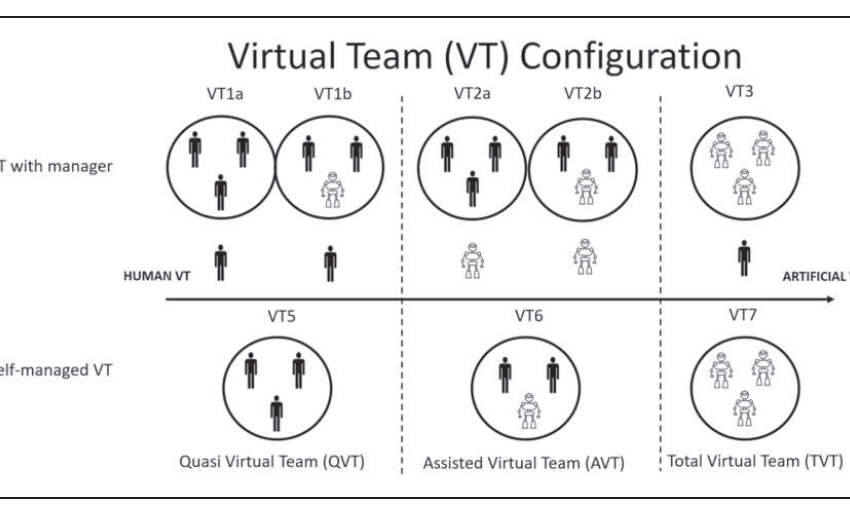Let’s go back for a moment to the idea that in the future you will sit at the same conference table together with humanoid robots that will work in your team. Today this idea is becoming more and more real, although in the world of artificial intelligence a surprisingly small role is attached to the fact that, however, it is not just an electronic mind, located somewhere in the cloud, but it would be nice to be able to pat an artificial worker on the shoulder.
Despite the fact that now the idea of human-robot cooperation is taking on a new expression after ChataGPT became public, I, together with Dr. Adrian Pyszka, had already worked on it several years ago.
At that time, we assumed two directions of evolution from human virtual teams to artificial virtual teams supported by artificial intelligence. The first, vertical direction of evolution is the change from virtual teams with a manager to self-managed virtual teams. The second, horizontal direction of evolution could be the change from fully human virtual teams to fully artificial virtual teams.
As I showed in the title figure above, there are several combinations of such evolution.
We have thus introduced a classification of virtual teams that includes:
- Quasi V-T – people working together, using a virtual environment and working over the Internet.
- Assisted V-T – mixed teams with partial participation of artificial team members (robots) and even self-managed or managed by a computer (a virtual leader called Manager As A Software MAAS) or artificial team members.
- Total V-T – a completely virtual team with artificial members (e.g. ANN – customer service, SOPHIE – accounting and invoicing, RICHARD – technical support, etc.), chat-bots, voice bots and virtual assistants with human characteristics and with the ability to read signals (non-verbal and verbal) from customers to better solve their problems – Team As A Software (TAAS).
To read more about where the idea for MAAS and TAAS constructs came from, see our 2022 article.
See:
Flak, O., Pyszka, A., Evolution From Human Virtual Teams to Artificial Virtual Teams

